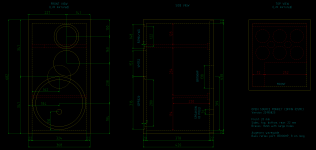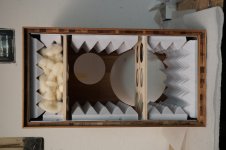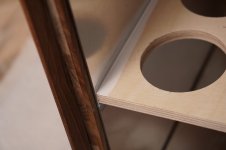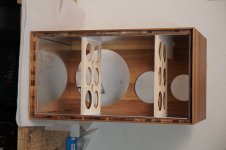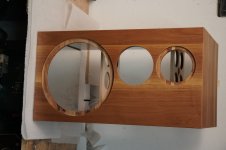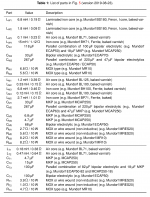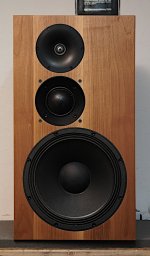Time to enjoy of all the good work, that has been done the last months 🙂 !I thought I'd say hello from the listening room... the sound is much better than the photo!
Last edited:
Is there a current B.O.M.?
Working on it.
Drivers:
Faital 12PR320
Volt VM752
Scan R2904/7000
x-over is here: osmcdoc/osmc_paper.pdf at master * mbrennwa/osmcdoc * GitHub
box dimensions: I need to clean up the CAD drawings... will add them to the osmc_paper.pdf
You already got the waveguides sorted 😀
Hi Matthias,
And...still satisfied with the obtained result of the last X-over? Not tried out some modifications anymore?
And...still satisfied with the obtained result of the last X-over? Not tried out some modifications anymore?
Hi Matthias,
And...still satisfied with the obtained result of the last X-over? Not tried out some modifications anymore?
Just to be sure I tried a bit more treble again a few weeks ago. I always came back to the 2019-8-23 version, and I left it there for a while now. The sound is "just right" this way. I have become a big fan of the elliptic filters, which yield very lucid and at the same time very musical sound. Thanks for pushing the elliptic filters forward here!
Nice to hear, I can say hundred times that elliptical filters sound good, but you also have to experience it yourself.
Working on the final enclosures, see photos.
I used a sandwich of 20 mm laminated walnut and 2 mm aluminium plates on the inside, and some bracing to further reduce vibrations. The result is a nicely "dead" enclosure, as confirmed by the infameous "knock test".
The box is stuffed with "Basotect" (melamine foam) and sheep's wool at the top.
I used a sandwich of 20 mm laminated walnut and 2 mm aluminium plates on the inside, and some bracing to further reduce vibrations. The result is a nicely "dead" enclosure, as confirmed by the infameous "knock test".
The box is stuffed with "Basotect" (melamine foam) and sheep's wool at the top.
Attachments
Final x-over (elliptic filters, version 2019-08-23)
I just realised that I never posted the final x-over schematic and the part values. While everything is available at GitHub, I guess it would be nice to have it in this thread for the sake of completeness, so here it is (elliptic filters, version 2019-08-23).
I just realised that I never posted the final x-over schematic and the part values. While everything is available at GitHub, I guess it would be nice to have it in this thread for the sake of completeness, so here it is (elliptic filters, version 2019-08-23).
Attachments
What adhesive did you use for the cabinet?
For the walnut parts I used normal wood glue. For the aluminium plates I used this.
Looking good. I like the sandwich construction you have made.Working on the final enclosures...
I suppose the glue of the bracings is not a hard material? In that way bracings and walls can partly vibrate separately and that would be good.
Looking good. I like the sandwich construction you have made.
I suppose the glue of the bracings is not a hard material? In that way bracings and walls can partly vibrate separately and that would be good.
The glue feels like "stiff rubber" after hardening.
There are many theories about the best approaches to reduce vibration of the enclosure. I like the ideas of using (i) a sandwich of different materials with different speeds of sound propagation (wood vs aluminium) and (ii) braces that keep the enclosure walls at a fixed position. In the past I have also used Hawaphon steel pellets with good success, but they are a PITA to work with (accidentally cut a chamber and the pellets are everywhere).
Very well done! The walnut is very appealing for this speaker.Final build: first box is done!
Besides the look, technically this speaker is very recommended to built.
- Home
- Loudspeakers
- Multi-Way
- Open Source Monkey Box
